Abstract
Current descriptions of the immune response identify two classes of antigenic stimuli that result in the production of specific antibody: (i) exogenous antigens and (ii) endogenous variable-region determinants of the immune system. We expand this scheme to include a third class of antigenic stimulus--new determinants created by the binding of antibody to antigen. This paper describes a set of monoclonal antibodies which arose after repeated immunization with antigen alone but which bound antibody--antigen complexes. These antibodies recognize determinants on the antibody portion of the complexes that were expressed as a consequence of antigen binding. Antibodies of this general type, "enhancing antibodies," which can strengthen antibody--antigen and idiotypic-anti-idiotypic antibody interactions, may play important regulatory and effector roles in the immune response. We suggest a model that predicts the occurrence and specificity of different classes of such antibodies and provides a conceptual framework that gives a straightforward explanation of the appearance in the immune response of rheumatoid antibodies and of antibodies that bind cooperatively to antigen.
Full text
PDF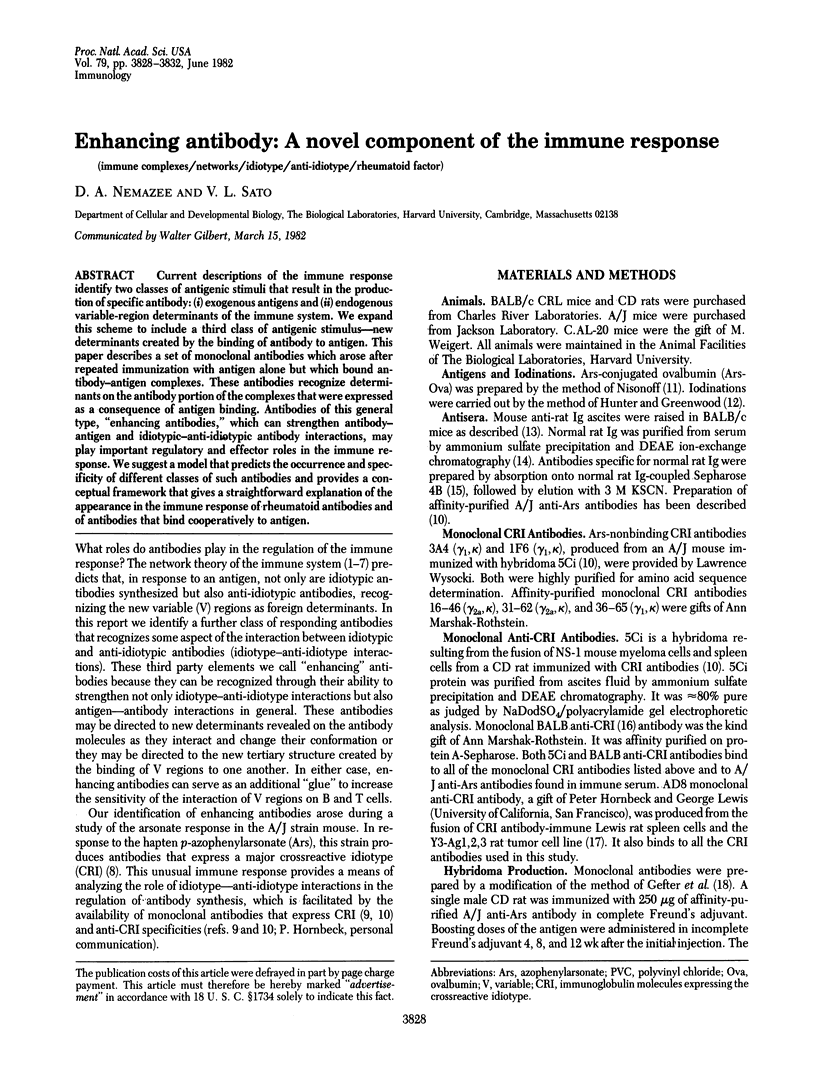
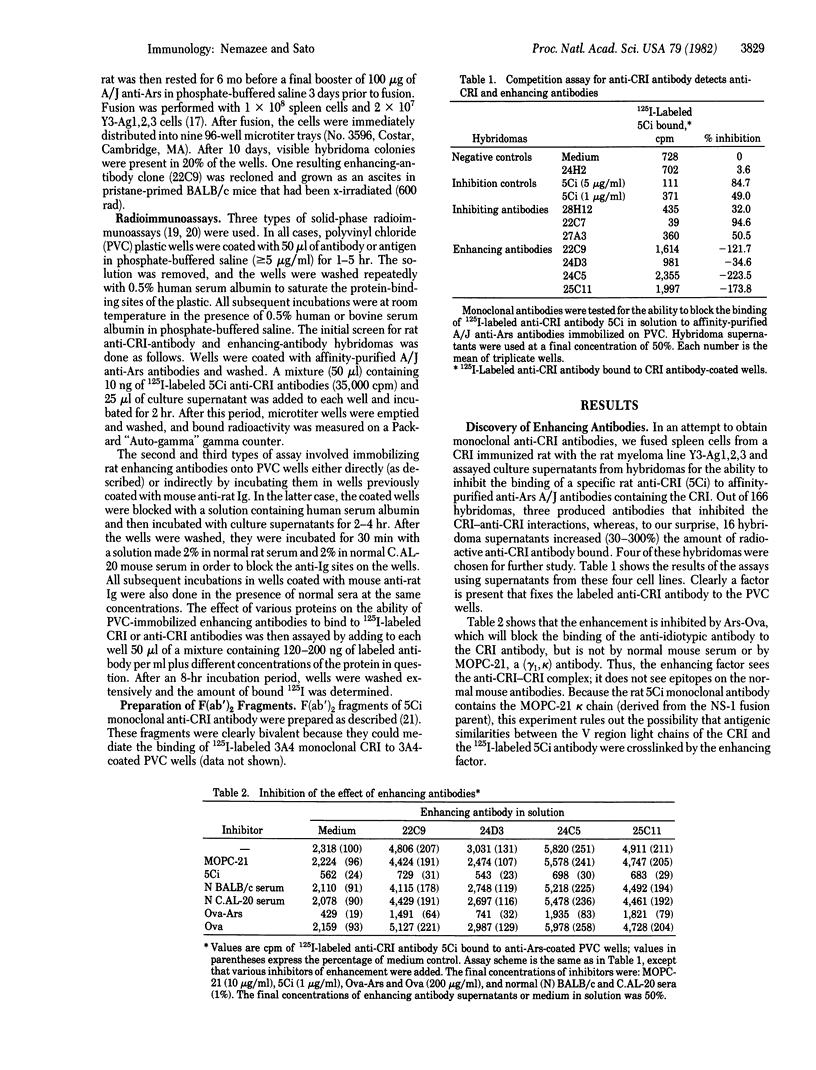
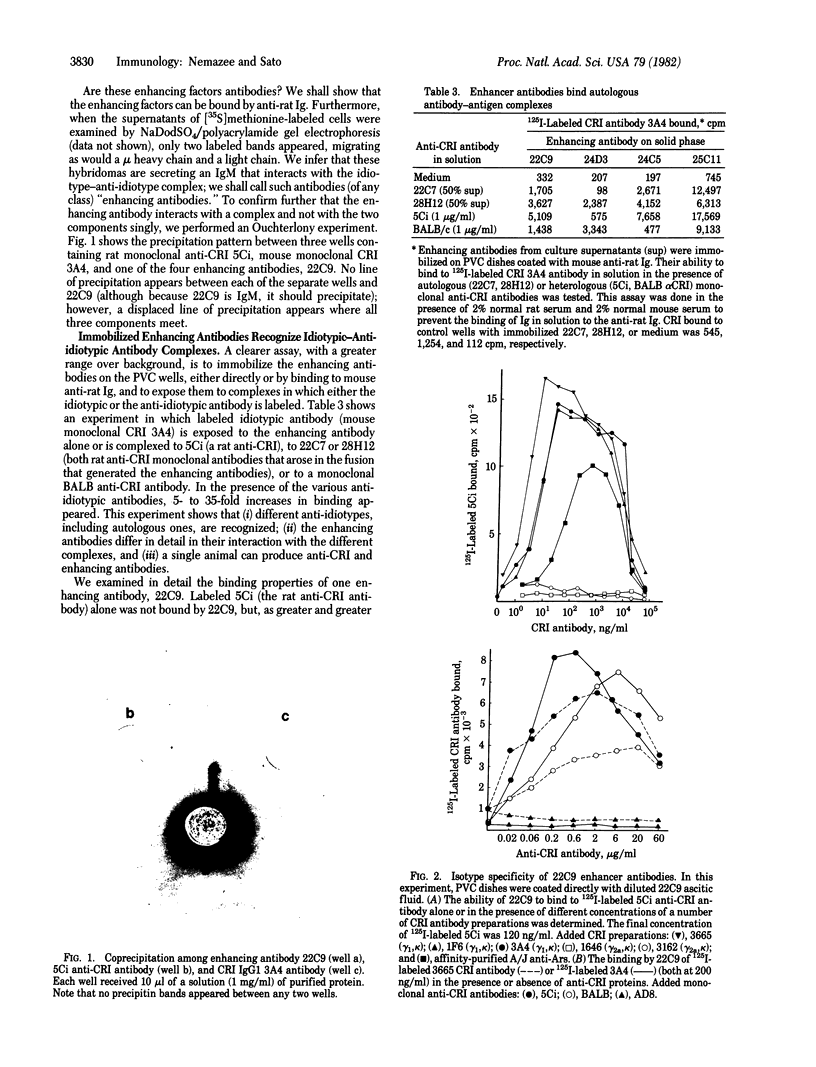
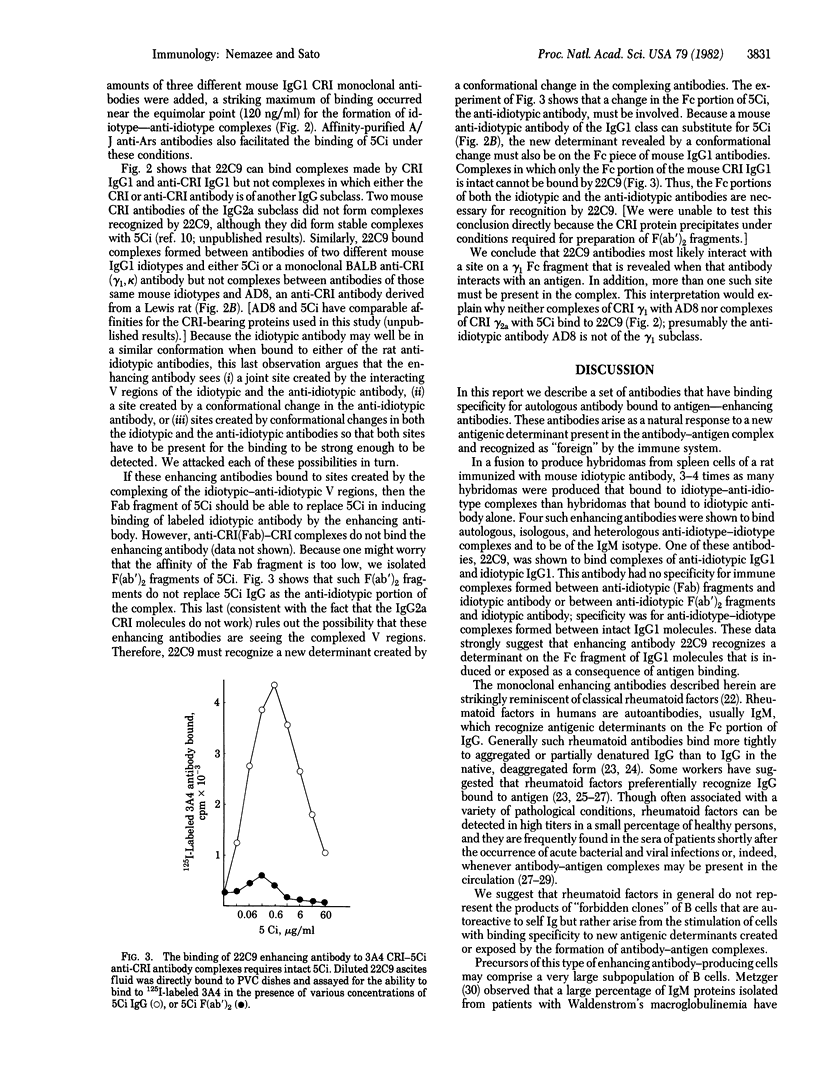
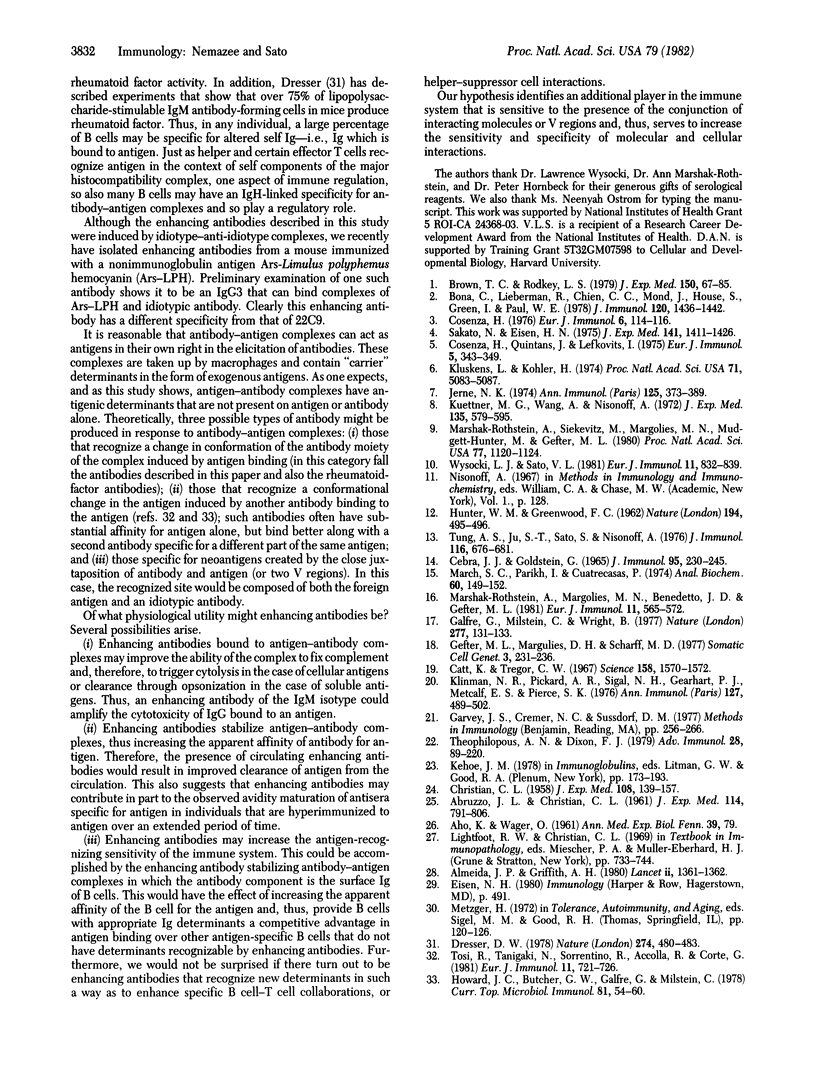
Images in this article
Selected References
These references are in PubMed. This may not be the complete list of references from this article.
- ABRUZZO J. L., CHRISTIAN C. L. The induction of a rheumatoid factor-like substance in rabbits. J Exp Med. 1961 Nov 1;114:791–806. doi: 10.1084/jem.114.5.791. [DOI] [PMC free article] [PubMed] [Google Scholar]
- AHO K., WAGER O. Production of anti-antibodies in rabbits. Ann Med Exp Biol Fenn. 1961;39:79–87. [PubMed] [Google Scholar]
- Almeida J. D., Griffith A. H. Viral infections and rheumatic factor. Lancet. 1980 Dec 20;2(8208-8209):1361–1362. doi: 10.1016/s0140-6736(80)92419-8. [DOI] [PubMed] [Google Scholar]
- Bona C., Lieberman R., Chien C. C., Mond J., House S., Green I., Paul W. E. Immune response to levan. I. Kinetics and ontogeny of anti-levan and anti-inulin antibody response and of expression of cross-reactive idiotype. J Immunol. 1978 Apr;120(4):1436–1442. [PubMed] [Google Scholar]
- Brown J. C., Rodkey L. S. Autoregulation of an antibody response via network-induced auto-anti-idiotype. J Exp Med. 1979 Jul 1;150(1):67–85. doi: 10.1084/jem.150.1.67. [DOI] [PMC free article] [PubMed] [Google Scholar]
- CHRISTIAN C. L. Characterization of the reactant (gamma globulin factor) in the F II precipitin reaction and the F II tanned sheep cell agglutination test. J Exp Med. 1958 Jul 1;108(1):139–157. doi: 10.1084/jem.108.1.139. [DOI] [PMC free article] [PubMed] [Google Scholar]
- Catt K., Tregear G. W. Solid-phase radioimmunoassay in antibody-coated tubes. Science. 1967 Dec 22;158(3808):1570–1572. doi: 10.1126/science.158.3808.1570. [DOI] [PubMed] [Google Scholar]
- Cebra J. J., Goldstein G. Chromatographic purification of tetramethylrhodamine-immune globulin conjugates and their use in the cellular localization of rabbit gamma-globulin polypeptide chains. J Immunol. 1965 Aug;95(2):230–245. [PubMed] [Google Scholar]
- Cosenza H. Detection of anti-idiotype reactive cells in the response to phosphorylcholine. Eur J Immunol. 1976 Feb;6(2):114–116. doi: 10.1002/eji.1830060208. [DOI] [PubMed] [Google Scholar]
- Cosenza H., Quintáns J., Lefkovits I. Antibody response to phosphorylcholine in vitro. I. Studies on the frequency of precursor cells, average clone size and cellular cooperation. Eur J Immunol. 1975 May;5(5):343–349. doi: 10.1002/eji.1830050510. [DOI] [PubMed] [Google Scholar]
- Dresser D. W. Most IgM-producing cells in the mouse secrete auto-antibodies (rheumatoid factor). Nature. 1978 Aug 3;274(5670):480–483. doi: 10.1038/274480a0. [DOI] [PubMed] [Google Scholar]
- Galfrè G., Milstein C., Wright B. Rat x rat hybrid myelomas and a monoclonal anti-Fd portion of mouse IgG. Nature. 1979 Jan 11;277(5692):131–133. doi: 10.1038/277131a0. [DOI] [PubMed] [Google Scholar]
- Gefter M. L., Margulies D. H., Scharff M. D. A simple method for polyethylene glycol-promoted hybridization of mouse myeloma cells. Somatic Cell Genet. 1977 Mar;3(2):231–236. doi: 10.1007/BF01551818. [DOI] [PubMed] [Google Scholar]
- HUNTER W. M., GREENWOOD F. C. Preparation of iodine-131 labelled human growth hormone of high specific activity. Nature. 1962 May 5;194:495–496. doi: 10.1038/194495a0. [DOI] [PubMed] [Google Scholar]
- Howard J. C., Butcher G. W., Galfre G., Milstein C. Monoclonal anti-rat MHC (H-1) alloantibodies. Curr Top Microbiol Immunol. 1978;81:54–60. doi: 10.1007/978-3-642-67448-8_9. [DOI] [PubMed] [Google Scholar]
- Jerne N. K. Towards a network theory of the immune system. Ann Immunol (Paris) 1974 Jan;125C(1-2):373–389. [PubMed] [Google Scholar]
- Klinman N. R., Pickard A. R., Sigal N. H., Gearhart P. J., Metcalf E. S., Pierce S. K. Assessing B cell diversification by antigen receptor and precursor cell analysis. Ann Immunol (Paris) 1976 Jun-Jul;127(3-4):489–502. [PubMed] [Google Scholar]
- Kluskens L., Köhler H. Regulation of immune response by autogenous antibody against receptor. Proc Natl Acad Sci U S A. 1974 Dec;71(12):5083–5087. doi: 10.1073/pnas.71.12.5083. [DOI] [PMC free article] [PubMed] [Google Scholar]
- Kuettner M. G., Wang A. L., Nisonoff A. Quantitative investigations of idiotypic antibodies. VI. Idiotypic specificity as a potential genetic marker for the variable regions of mouse immunoglobulin polypeptide chains. J Exp Med. 1972 Mar 1;135(3):579–595. doi: 10.1084/jem.135.3.579. [DOI] [PMC free article] [PubMed] [Google Scholar]
- March S. C., Parikh I., Cuatrecasas P. A simplified method for cyanogen bromide activation of agarose for affinity chromatography. Anal Biochem. 1974 Jul;60(1):149–152. doi: 10.1016/0003-2697(74)90139-0. [DOI] [PubMed] [Google Scholar]
- Marshak-Rothstein A., Margolies M. N., Benedetto J. D., Gefter M. L. Two structurally distinct and independently regulated idiotypic families associated with the A/J response to azophenylarsonate. Eur J Immunol. 1981 Jul;11(7):565–572. doi: 10.1002/eji.1830110709. [DOI] [PubMed] [Google Scholar]
- Marshak-Rothstein A., Siekevitz M., Margolies M. N., Mudgett-Hunter M., Gefter M. L. Hybridoma proteins expressing the predominant idiotype of the antiazophenylarsonate response of A/J mice. Proc Natl Acad Sci U S A. 1980 Feb;77(2):1120–1124. doi: 10.1073/pnas.77.2.1120. [DOI] [PMC free article] [PubMed] [Google Scholar]
- Sakato N., Eisen H. N. Antibodies to idiotypes of isologous immunoglobulins. J Exp Med. 1975 Jun 1;141(6):1411–1426. doi: 10.1084/jem.141.6.1411. [DOI] [PMC free article] [PubMed] [Google Scholar]
- Theofilopoulos A. N., Dixon F. J. The biology and detection of immune complexes. Adv Immunol. 1979;28:89–220. doi: 10.1016/s0065-2776(08)60800-7. [DOI] [PubMed] [Google Scholar]
- Tosi R., Tanigaki N., Sorrentino R., Accolla R., Corte G. Binding of one monoclonal antibody to human Ia molecules can be enhanced by a second monoclonal antibody. Eur J Immunol. 1981 Sep;11(9):721–726. doi: 10.1002/eji.1830110910. [DOI] [PubMed] [Google Scholar]
- Tung A. S., Ju S. T., Sato S., Nisonoff A. Production of large amounts of antibodies in individual mice. J Immunol. 1976 Mar;116(3):676–681. [PubMed] [Google Scholar]
- Wysocki L. J., Sato V. L. The strain A anti-p-azophenylarsonate major cross-reactive idiotypic family includes members with no reactivity toward p-azophenylarsonate. Eur J Immunol. 1981 Oct;11(10):832–839. doi: 10.1002/eji.1830111016. [DOI] [PubMed] [Google Scholar]



